Escaping Criticism, painted by Pere Borrell del Caso in 1874, is a perfect example of the art technique called "trompe-l'œil", an optical illusion where the painter makes a flat surface seem three-dimensional.
And it will completely change the way you think of art...
And it will completely change the way you think of art...

The Catalan artist Pere Borrell del Caso (1835-1910) is not particularly famous, but Escaping Criticism has become iconic.
It's an example of "trompe-l'œil", French for "deceiving the eye" — an optical illusion which makes a flat surface seem three-dimensional.
Like this:
It's an example of "trompe-l'œil", French for "deceiving the eye" — an optical illusion which makes a flat surface seem three-dimensional.
Like this:
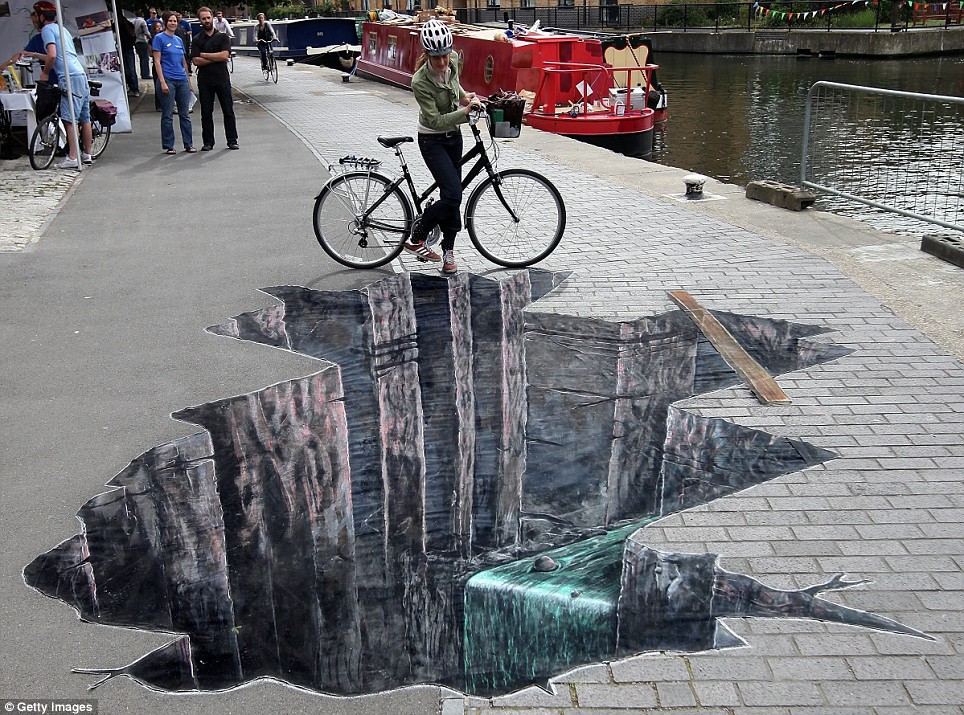
Borrell del Caso was drawing our attention to the fact that this is what most art does — imitate reality by appearing three-dimensional.
The impression of depth is part of what makes something like the Mona Lisa seem realistic.
The impression of depth is part of what makes something like the Mona Lisa seem realistic.

The Ancient Romans and Greeks did it too, and there's even a famous story about a contest between the famed Greek painters Zeuxis and Parrhasius to see who was best.
Zeuxis painted grapes so realistic that birds flew down and tried to eat them. Next was Parrhasius' turn...
Zeuxis painted grapes so realistic that birds flew down and tried to eat them. Next was Parrhasius' turn...
...Zeuxis came to look at Parrhasius' painting, which was concealed behind a pair of curtains, but when he asked for the curtains to be pulled back it was revealed that they were the painting.
Zeuxis had only deceived birds; Parrhasius had deceived a human — he was the winner.
Zeuxis had only deceived birds; Parrhasius had deceived a human — he was the winner.
It was to this technique that painters in the Italian Renaissance returned, starting with Giotto and culminating in Raphael, Michelangelo, and Leonardo.
From the flat, two-dimensional art of the Middle Ages to fully three-dimensional, "realistic" paintings.
From the flat, two-dimensional art of the Middle Ages to fully three-dimensional, "realistic" paintings.

The term "trompe-l'œil", however, usually refers to paintings which not only use perspective and depth, but which serve as genuine optical illusions to trick the viewer.
Something like this, painted by Henry Fuseli in 1750, which somehow seems to be totally real.
Something like this, painted by Henry Fuseli in 1750, which somehow seems to be totally real.

It's a technique often used in public art installations or in graffiti, whereby streets and walls are turned into canyons, waves, and windows to far-off places.
A delightful visual conceit.
A delightful visual conceit.

It was during the Renaissance that artists realised this technique might be useful in architecture.
How? Smaller spaces could be turned into larger ones with illusionistic paintings. Like Andrea Mantegna's ceiling at the Ducal Palace in Mantua, from the 1470s.
How? Smaller spaces could be turned into larger ones with illusionistic paintings. Like Andrea Mantegna's ceiling at the Ducal Palace in Mantua, from the 1470s.
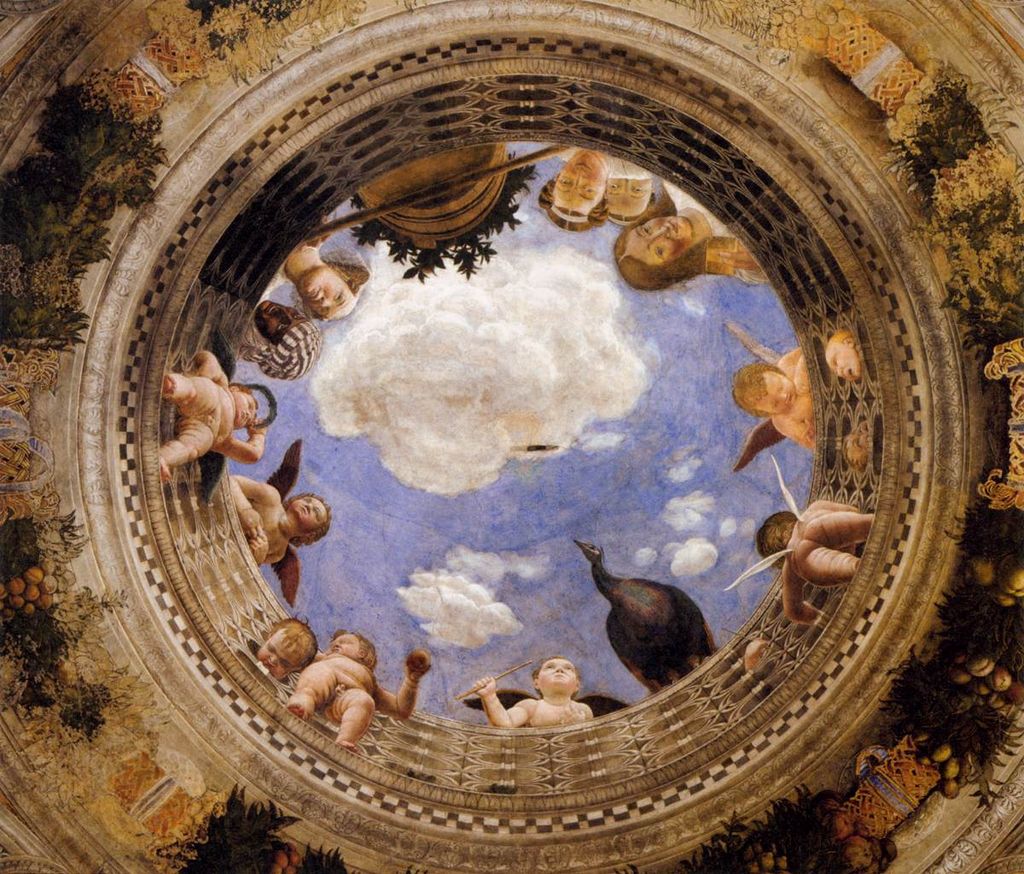
This specific technique, called "di sotto in sù" in reference to the fact that it is seen from below, soon became a key part of church decoration.
Like Andrea Pozzo's painted vaults at the Jesuit Church in Vienna — this dome is an illusion.
Like Andrea Pozzo's painted vaults at the Jesuit Church in Vienna — this dome is an illusion.

An even more striking example might be the fake apse at the Santa Maria presso San Satiro in Milan, painted by Donato Bramante in the 15th century.
He turned a flat wall into an additional space, thus making the church feel much larger than it really was.

He turned a flat wall into an additional space, thus making the church feel much larger than it really was.
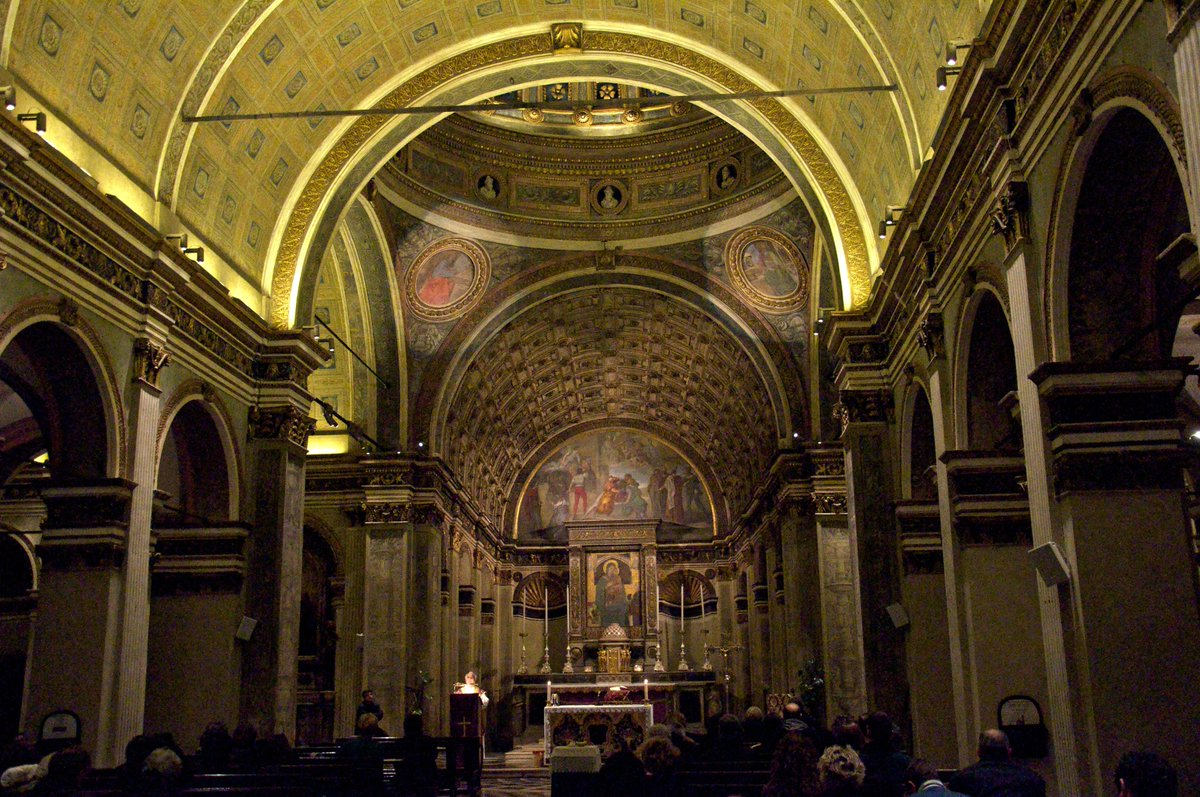

Perhaps what's special about Escaping Criticism, then, is how it uses trompe-l'œil to point out that art, even when it doesn't deceive us quite so directly as Bramante's false apse, is always an illusion of reality.
The young boy realises all art is deception, and is set free.
The young boy realises all art is deception, and is set free.

A point made most famously by the Surrealist painter René Magritte.
In The Treachery of Images he controversially wrote "this is not a pipe" — because it is a *painting* of a pipe, not the thing itself.
As he said, you couldn't smoke it. To call it a pipe would be a lie.
In The Treachery of Images he controversially wrote "this is not a pipe" — because it is a *painting* of a pipe, not the thing itself.
As he said, you couldn't smoke it. To call it a pipe would be a lie.

An idea explored somewhat more subtly in works like The Human Condition or Not To Be Reproduced, where Magritte plays with the many ways in which art can deceive us. 


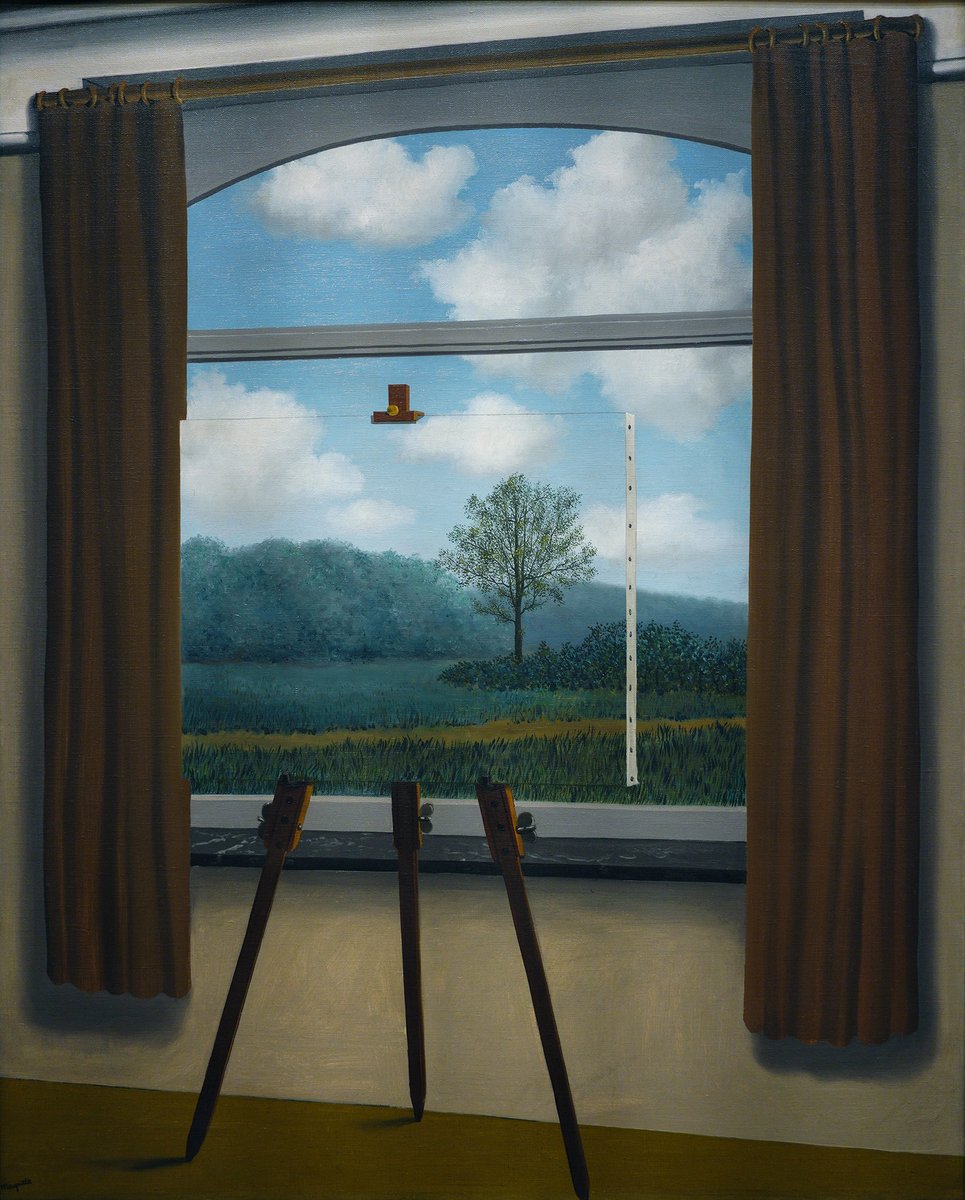
The worlds of Magritte or Borrell del Caso are no less deceptive than, say, the worlds of a highly realistic painter like Albert Bierstadt — it's just that Magritte and Borrell del Caso are confronting the deception head on and breaking the spell of art, for good or for bad. 

But not all art, even where depth is implied, attempts to create an illusion of reality.
Just consider the great tradition of Chinese landscape painting, where we know we are not looking at "real" mountains; these are poetic evocations of a mountainscape, not the thing itself.
Just consider the great tradition of Chinese landscape painting, where we know we are not looking at "real" mountains; these are poetic evocations of a mountainscape, not the thing itself.

Or, say, in any form of Abstract Art. Whether Piet Mondrian's geometry, Jackson Pollock's splatters, or the abstract tiles of the Pink Mosque in Shiraz.
These are artworks of pure colour, shape, and pattern which do not attempt to imitate reality in any direct way.


These are artworks of pure colour, shape, and pattern which do not attempt to imitate reality in any direct way.
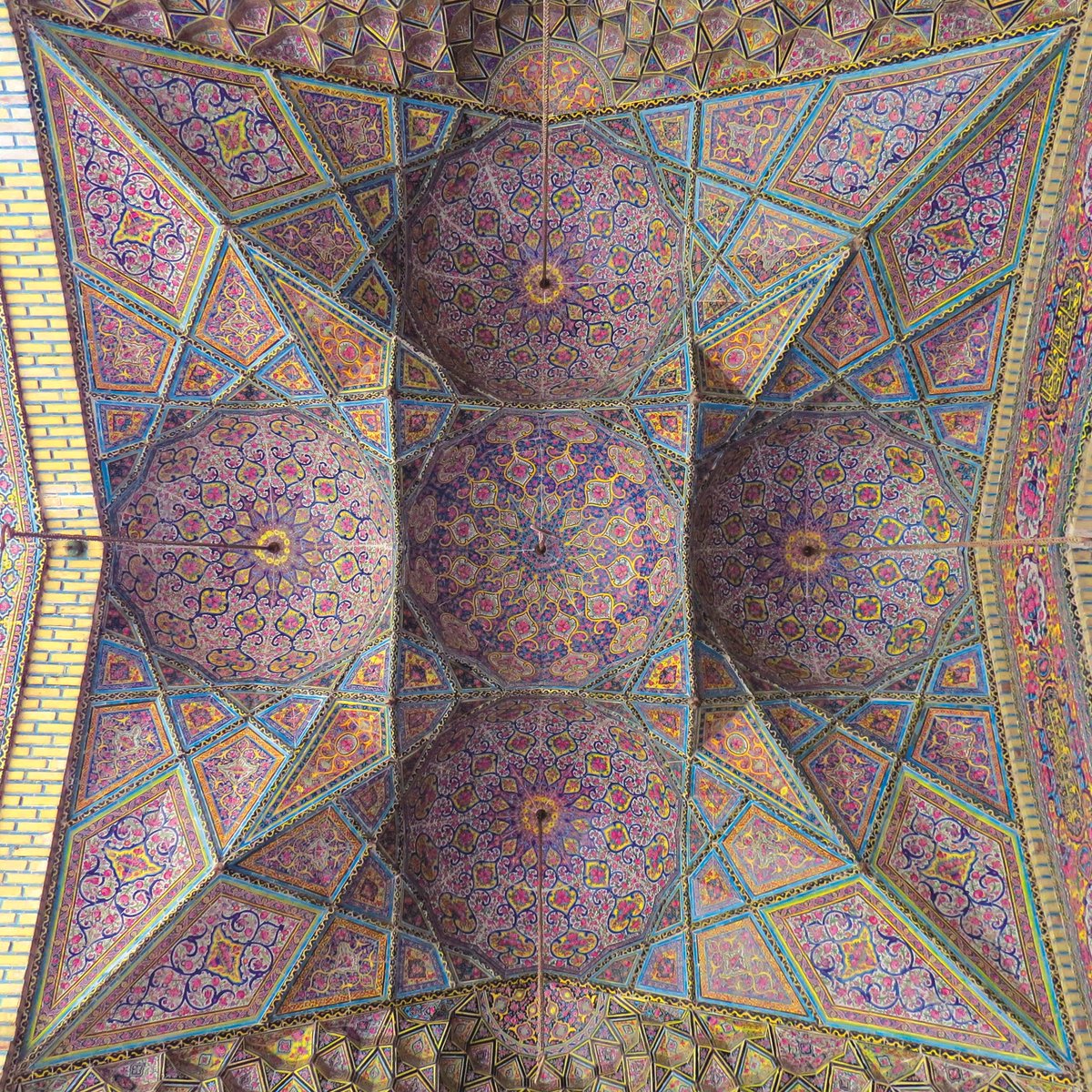


Perhaps Borrell del Caso was saying something everybody already knows — that art is obviously not the same thing as the real world.
It is a short step from the self-consciousness of Escaping Criticism to the conceptual art that has been dividing opinion for about a century now.
It is a short step from the self-consciousness of Escaping Criticism to the conceptual art that has been dividing opinion for about a century now.

Or, maybe, it marks an important realisation — that art is always a trick of some kind.
And, more importantly, that the demand for "realistic" art is misplaced and can even be a serious constraint.
There would have been no Picasso without that realisation — without that escape.
And, more importantly, that the demand for "realistic" art is misplaced and can even be a serious constraint.
There would have been no Picasso without that realisation — without that escape.
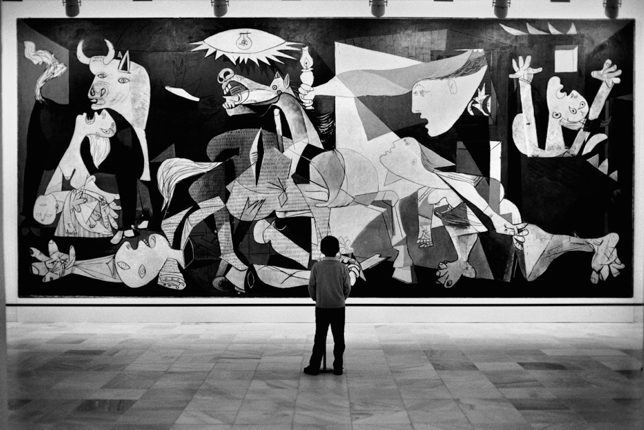
Is Escaping Criticism a profound statement about the nature of art or simply a playful point well made?
In the end, only one person can decide: the viewer...
In the end, only one person can decide: the viewer...

• • •
Missing some Tweet in this thread? You can try to
force a refresh






















